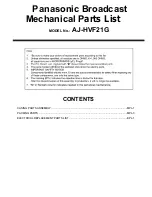
EKINOX Series
– Hardware Manual
EKINOXV3HM.1.2
5.3. Serial interfaces
Physical serial interfaces are designated as Port A, B, C, D and E and have the following common
characteristics:
●
4 800 to 921 600bps operation (Default set to 115 200)
●
RS-232 or RS-422 modes, configured by software
●
Parity control enabling/disabling (disabled by default)
●
Data bits: 8
●
Stop bits: 1
The following table provides more details about each port specificity in terms of availability, and
capabilities:
Port
Availability
Tx / Rx
availability
RS-232/422 configuration
Cable / software defined
sbgECom binary
commands input
Other functions / multiplexing
A
All
Tx/Rx
Cable
Yes
B
EKINOX A / E Tx/Rx
Software
-
C
All
Tx/Rx
Software
-
D
All
Rx
Software
-
E
All
Rx
Software
-
Multiplexed w. Odometer input
Note: The Ekinox automatically limits the serial signals slew-rate to minimize EMI and reduce
communication error when the baud rate is below 230 400 bps.
5.4. Supported protocols
The Ekinox has been designed to be connected to a large range of aiding equipment and materials. In
addition to the native sbgECom binary protocol, other third party or standard protocols are also supported
such as NMEA, RTCM, TSS1, Septentrio SBF, Novatel Binary protocol, Trimble and others:
Note: For a complete description of the sbgECom and other supported protocols, please refer to the
Ekinox and Apogee Firmware Reference Manual.
5.5. Synchronization Inputs and outputs
The Ekinox series integrate a set of Sync Inputs and outputs. These logic pins can have different functions:
5.5.1. SYNC In A, B, C, D and E
●
Output log trigger: All pulses received generate events that can generate specific Logs output. Any
output log can be triggered by an event pulse. The Ekinox can handle up to 200Hz triggers.
●
Event Marker: Events up to 1kHz are supported on each pin.
●
PPS input
●
External aiding data time-stamping
33/46














































